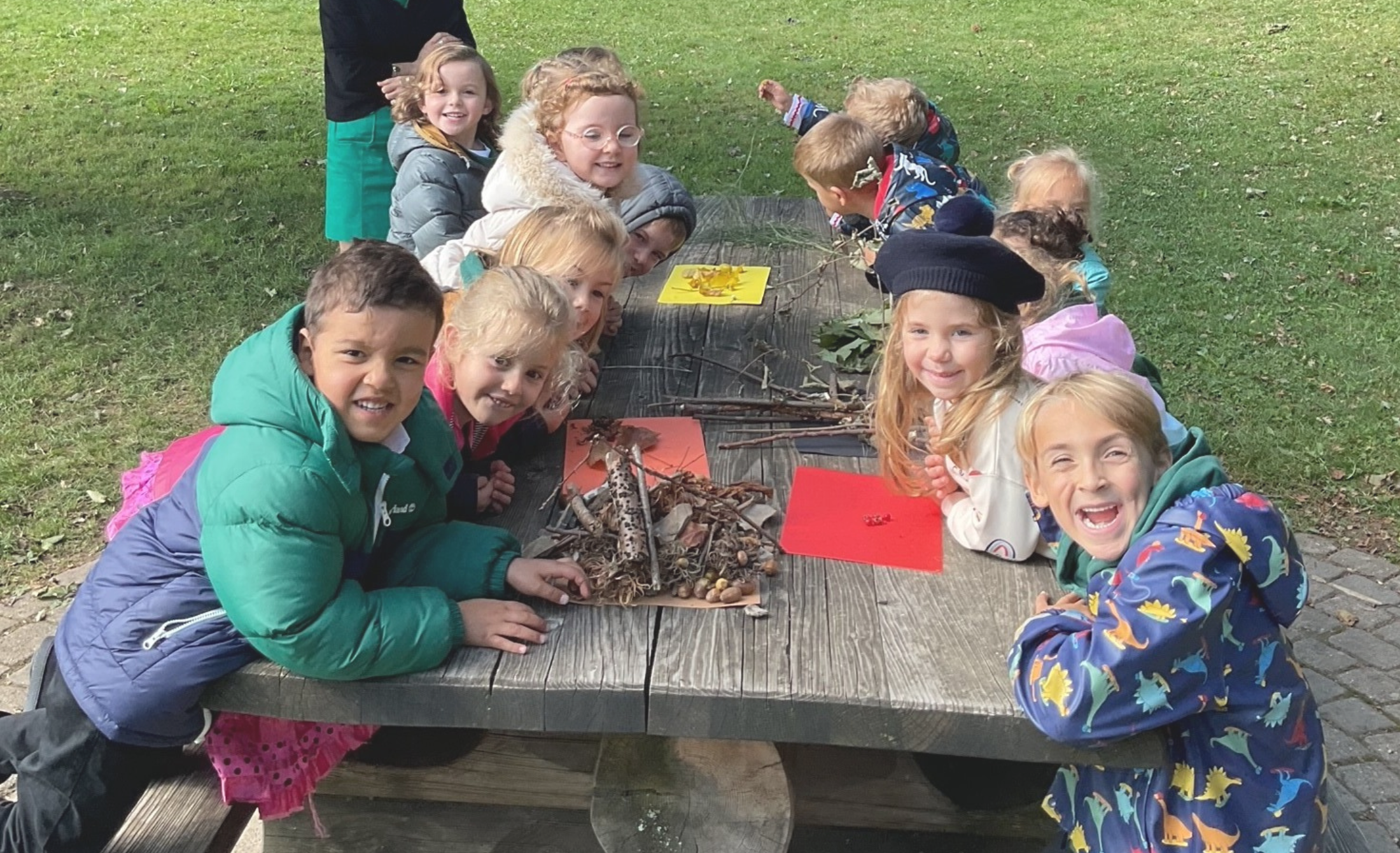Let’s Take Learning Outdoors!
The “Outdoor Classroom” is an educational approach that involves conducting learning activities outside, in nature, or an outdoor environment, rather than in a traditional classroom.
In kindergarten at Haut-Lac School, we fully embrace this approach by using natural resources to enrich the learning experience. Children get to explore, observe, experiment and actively learn during outdoor lessons, whilst benefiting from the multiple physical, emotional and cognitive advantages of being in nature.
Observing the world around them
To work on colors, we ask children to gather leaves, flowers and stones of different shades. They then group these natural elements by color and use them to create mosaics or Land Art compositions. This is both a fun and practical way to reinforce color recognition.
Seasons are also a key theme explored in outdoor lessons. For instance, during an autumn walk, the children will observe the various colors and textures of fallen leaves, as well as learn to identify the changes that mark the transition between seasons. This helps them better understand the natural cycles of life and nature.

Discovering maths and science
To learn about shapes and numbers, we encourage children to find objects in nature that match geometric shapes: round pebbles for circles, sticks for straight lines, or leaves shaped like triangles. They then count the items they’ve found to strengthen their maths skills while moving around and exploring their surroundings.
As for science, we regularly organise activities where children observe insects, plants and animals in their natural habitats. During one session, the children observed snails after the rain, noted their characteristics, and discussed their role in the ecosystem. They also built small shelters using branches and leaves to help them understand more about animal habitats.
Not to mention foster a deeper respect for the environment.

Promoting physical and social well-being
This educational approach offers numerous benefits, such as improved concentration. After spending time outdoors, the children are more motivated to learn and develop their creativity, especially through artistic projects like Land Art which involves creating things using natural materials.
Their physical health is also better, as they are more active and spend less time sitting.
Lastly, outdoor class strengthens the social bonds between students. By working together to tackle outdoor challenges, such as building a shelter or finding natural objects, they learn to cooperate, communicate and solve problems as a group, enhancing their teamwork and social skills.
In summary, outdoor class is a rich educational approach that enables children to flourish in a natural environment thanks to active and dynamic learning experience .
Murielle Omphalius
Kindergarten Coordinator













